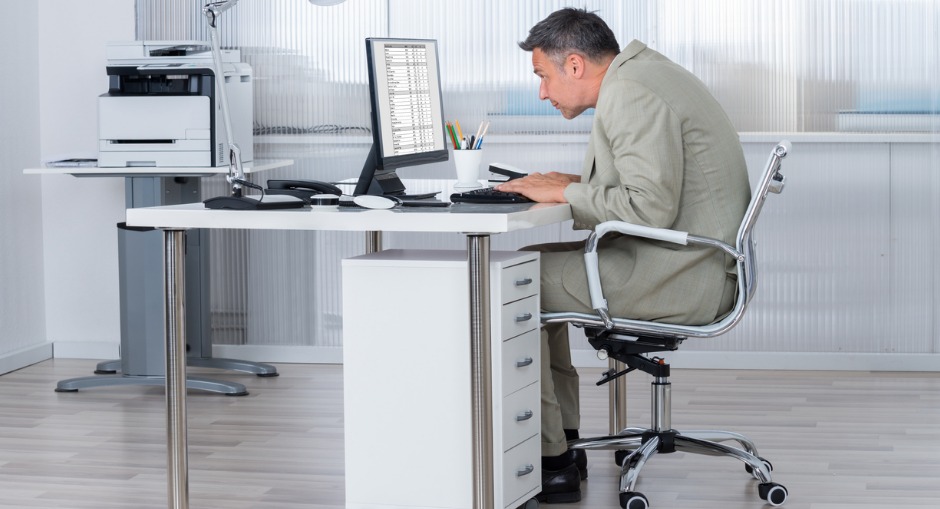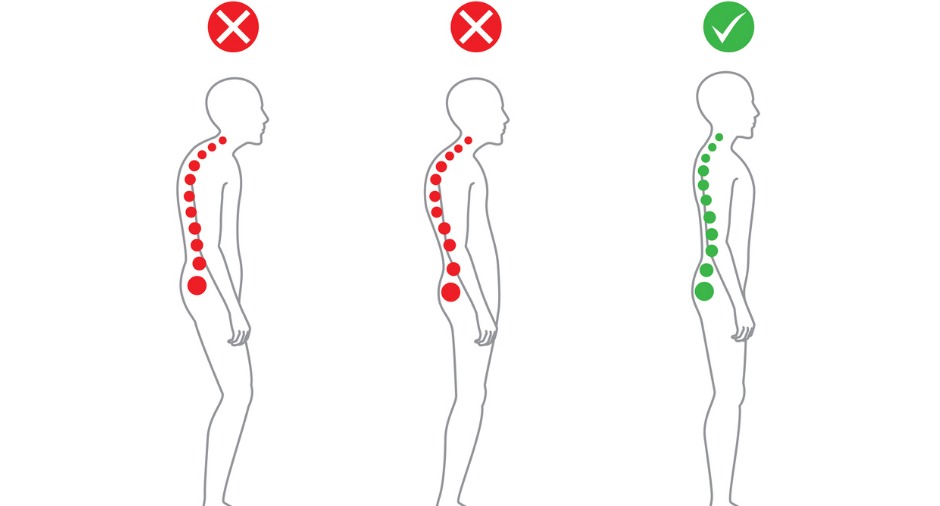
It’s easy to spot someone with perfect posture. They stand tall with their shoulders and head in alignment with their back and legs. But few people have perfect posture. A poor posture not only looks bad, it also impacts on digestion, breathing, muscles, ligaments and joints.
So what are the different types of posture and is there one best posture?
The 4 Types of Postural Alignment
Four of the most common postural types that deviate from a good neutral posture are:
#1 Kyphosis Posture
Someone with a Kyphosis posture has rounded shoulders giving them an excessive back curve and hyperextended cervical spine. They often have a hunched over appearance and depressed chest. This posture is commonly caused by degenerative changes in the body, muscle weakness and compression fractures.
Kyphosis posture problems are common amongst the elderly, office workers, large-breasted women, obese and very tall people.
#2 Lordosis Posture
Everyone’s spine curves a little in the lower back but people with a lordosis posture have an excessive curve, often with an increased pelvic tilt. The stomach and head are pushed forward too. Often called hollow or saddle back.
Lordosis posture is common amongst truck drivers and pregnant women.
#3 Sway Back
A sway back posture is where the pelvis is pulled forward, past the centre of gravity. To compensate for the shift in gravity, a person with a sway back will poke their head forward, and their upper back will curve forward. Their chest is often sunken, shoulders protracted and they have a tight upper abdominal muscle.
Sway back is most common in pregnant women, obese people who carry the weight in their abdominal region and teenagers who have some ‘attitude’ in their posture.
#4 Flat Back
Instead of the natural curves in the spine, the spine’s alignment is flatter than usual for people with a flat back. The pelvis is tucked in, causing people with a flat back posture to stoop forward. Standing for long periods is difficult and they can experience ongoing back and leg pain. Muscle imbalances are often to blame for this posture.
Flat back syndrome can be caused by Degenerative Disc Disease and compression fractures.
What is the Best Posture?
The best posture is the neutral posture where the spine, pelvis and hips all line up vertically. The impact of any movement is spiral in a balanced way. Only a small percentage of the population has the ideal neutral posture.

A neutral posture means the use correct of muscles so bones and joints are ideally aligned. Proper alignment decreases the chance of abnormal wearing of joint surfaces and stress on ligaments.
How Can I Make Sure I Have Good Posture?
If you are unsure what your posture is like, you can look in a full-length mirror and ask a friend to help observe to tell if:
- Your head is straight not forward or back
- Your shoulders are level and in line with your ears
- The space between your arms and sides is equal
- Your hips are level
- Your stomach is flat
- Your lower back has a slight curve
- Your kneecaps are straight ahead not turned
- Ankles are straight
- Chin is parallel with the floor and not tilted up or down
What is Bad Posture?
Bad posture is often caused by muscles that are tight, stretched or weak which put different strains on the body. Bad posture affects the way we sit, stand and walk.
Poor posture can cause aesthetic and functional problems. Rather than standing tall and straight, poor posture can make you look less confident.
Over time, your poor posture can cause a range of health problems relating to your spine, shoulders, knees and hips. You can experience back and leg pain, poor flexibility, weak muscles, constricted nerves, and a limited ability to burn fat.
How to Improve Bad Posture
Most people can improve their poor posture. Just being made aware of their incorrect stance can be enough for some people and they make a conscious effort to improve their posture. With time, it becomes second nature to sit and stand correctly.
Other people can improve their posture through exercise. Doing regular exercises that concentrate on a problem area can strengthen and train the body into the correct position. Check out this list of exercises to work on any posture problems you have identified.
Correct posture when sitting is also important. Take a look at our ergonomic office chairs and sit stand desks. You can also call us on (08) 9240 7066 orcontact us online for more personalised advice.